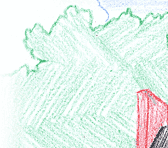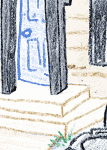|
Creature Feature: Background on GroundhogsWe know that every February they determine how long winter sticks around...but what else do we know about groundhogs? Letís do some digging! Groundhogs, also known as woodchucks or whistlepigs, are large, ground-dwelling rodents, belonging to the marmot family. Groundhogs are commonly found in northeastern and central United States and Canada. If youíre a Pennsylvania native, most likely youíve spotted a groundhog, or at the very least youíve come across its burrows. While groundhogs are excellent burrowers, they are also known to be skilled swimmers and climbers, which helps them to escape predators. Groundhogs may flee at the sight of humans, but the damage done by a groundhog is not so easily hidden. Groundhog DamageThe groundhogís diet and burrowing habits can be a terrible nuisance for farmers and homeowners. Groundhogs eat roughly a third of their weight in vegetation, which can lead to destroyed crops and gardens. When groundhogs dig near a manmade structure, such as under a porch or deck, the absence of supporting dirt can lead to a weak foundation that is prone to cracking. This potential damage is dangerous and costly, so if you suspect a groundhog is invading your territory, donít ignore it! What To Do If You Have Groundhog ProblemHere are some signs of damage caused by groundhogs:
The most effective method of handling a groundhog problem is through trapping and removal. If you try to fill in their burrows, they will simply dig their way out. If you try to use a repellant, the animals could either ignore it, or dig somewhere else. Trapping and removal is proven to be the best technique for groundhog control. With that being said, if you suspect that a groundhog is burrowing beneath your porch, deck, or anywhere near your home or building, make sure you call AAA Pest & Wildlife to help remove the groundhog and prevent it from returning! We have the highest-quality wildlife control and animal exclusion services. Call us at: (215) 796-5177, and follow us on Facebook for more wildlife facts! Want more wildlife facts and info? Follow us on Facebook! 
|
|||||||||||||||||||||||||||||||||||||||||||||||||||||||||||||||||||

























